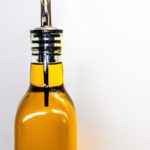Tasmanian startup Sea Forest has partnered with a major milk processor to trial its Reduced Emissions Feed Additive, the red seaweed Asparagopsis. Climate action is a major priority for Fonterra with methane emissions from dairy herds contributing to climate change, and this is one of several initiatives for the company.
taxiformis
What is a Reduced Emissions Feed Additive©?
Find out more about Reduced Emissions Feed Additives, and how they can help reduce the climate change impact of the world’s livestock herds. Learn about how they are made, how they work, and where to find them.
Using oil immersion to deliver a naturally-derived, stable bromoform product from the red seaweed Asparagopsis taxiformis
New paper examining delivery methods of Asparagopsis taxiformis has compared two methods and found one to be far superior. The methods compared were oil immersion and freeze-drying.
The science behind FutureFeed® (Asparagopsis taxiformis)
Questions about FutureFeed®? Find out more about it, and how this variety of seaweed could help reduce emissions that are emitted by the world’s livestock populations. Find out what it is, how it can help, and where to find it around the world.
Sam Elsom swaps fashion for seaweed farming
Sam Elsom’s Instagram feed is looking pretty bare. The fashion designer and photographer hasn’t posted a fashion-related image on his feed since mid-2018, but following an interview with the Australian Financial Review, the reason why is clear – it’s because of seaweed. Specifically, Asparagopsis taxiformis, a variety of seaweed which has been shown in scientific tests to reduce the methane output of livestock such as cows. This means that seaweed could be a major solution to climate change.




